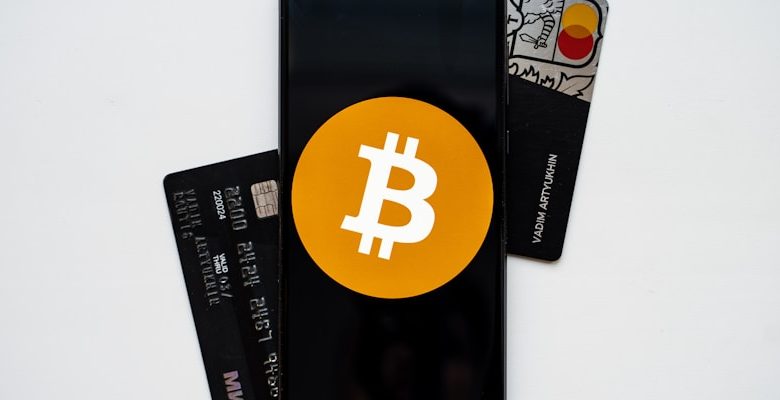Crypto Security Breaches: How Exchanges Are Strengthening Defenses

- The increasing threat of crypto security breaches
- Common vulnerabilities in crypto exchanges
- Best practices for securing crypto assets
- Role of technology in enhancing exchange security
- Regulatory measures to prevent security breaches in the crypto space
- Case studies of successful defense strategies implemented by exchanges
The increasing threat of crypto security breaches
As the popularity of cryptocurrencies continues to rise, so does the threat of security breaches. Hackers are constantly looking for vulnerabilities in crypto exchanges to exploit, putting users’ funds at risk. These breaches can result in massive financial losses and damage to the reputation of the exchange.
One of the main reasons for the increasing threat of crypto security breaches is the lack of regulation in the industry. Without clear guidelines and oversight, exchanges are left to fend for themselves when it comes to implementing security measures. This lack of standardization makes it easier for hackers to find weaknesses in the system and carry out attacks.
Additionally, the anonymous nature of cryptocurrency transactions makes it difficult to track and recover stolen funds. Once a hacker has successfully breached an exchange, they can quickly transfer the stolen funds to multiple wallets, making it nearly impossible to trace the money back to its original owner.
Overall, the rising threat of crypto security breaches highlights the need for exchanges to prioritize the protection of their users’ funds. By implementing robust security measures, exchanges can reduce the risk of breaches and safeguard the integrity of the cryptocurrency market.
Common vulnerabilities in crypto exchanges
Crypto exchanges are susceptible to a variety of vulnerabilities that hackers can exploit to gain unauthorized access to users’ funds and sensitive information. These vulnerabilities can put the security and trust of the exchange at risk, making it crucial for exchanges to constantly strengthen their defenses.
- One common vulnerability in crypto exchanges is poor security practices, such as weak passwords or lack of two-factor authentication. Hackers can easily exploit these weaknesses to gain access to user accounts and steal funds.
- Another vulnerability is insecure APIs, which can be targeted by hackers to manipulate trades, access users’ accounts, or disrupt the exchange’s operations. Exchanges need to ensure that their APIs are securely coded and regularly tested for vulnerabilities.
- Furthermore, inadequate encryption of data stored on the exchange’s servers can also expose sensitive information to hackers. Exchanges must implement strong encryption protocols to protect user data from unauthorized access.
- Additionally, social engineering attacks, such as phishing scams or impersonation, can trick users into revealing their login credentials or other sensitive information. Exchanges need to educate their users about these threats and implement measures to detect and prevent social engineering attacks.
- Lastly, insider threats pose a significant risk to crypto exchanges, as employees with access to sensitive information can misuse their privileges for personal gain or to facilitate a breach. Exchanges must have strict access controls and monitoring systems in place to detect and prevent insider threats.
By addressing these common vulnerabilities and implementing robust security measures, crypto exchanges can enhance their defenses against cyber threats and protect their users’ assets and information.
Best practices for securing crypto assets
When it comes to securing your crypto assets, there are several best practices that you can follow to minimize the risk of security breaches. These practices are essential for protecting your investments and ensuring the safety of your digital assets. Here are some key strategies that you can implement to strengthen the security of your crypto holdings:
- Use a hardware wallet: Consider storing your crypto assets in a hardware wallet rather than keeping them on an exchange. Hardware wallets provide an extra layer of security by keeping your private keys offline and away from potential hackers.
- Enable two-factor authentication: Implementing two-factor authentication (2FA) adds an extra level of security to your accounts by requiring a second form of verification – such as a code sent to your phone – in addition to your password.
- Keep software up to date: Make sure to regularly update the software on your devices and wallets to protect against any known security vulnerabilities. Updates often include patches for potential exploits.
- Use strong, unique passwords: Create complex passwords for your accounts and avoid using the same password across multiple platforms. Consider using a password manager to securely store and manage your passwords.
- Be cautious of phishing scams: Be wary of unsolicited emails, messages, or websites that may be attempting to steal your personal information. Avoid clicking on suspicious links and only provide sensitive information on secure, verified websites.
By following these best practices, you can significantly reduce the risk of falling victim to a crypto security breach. Protecting your assets should be a top priority, and taking proactive measures to secure your holdings is crucial in the ever-evolving landscape of digital currency.
Role of technology in enhancing exchange security
In order to enhance exchange security, technology plays a crucial role in safeguarding cryptocurrency assets from potential breaches. By implementing advanced security measures, exchanges can mitigate the risk of cyber attacks and unauthorized access to users’ funds.
One way technology enhances exchange security is through the use of multi-factor authentication (MFA). This additional layer of security requires users to provide two or more forms of verification before gaining access to their accounts. By utilizing MFA, exchanges can significantly reduce the risk of unauthorized access even if login credentials are compromised.
Furthermore, encryption technology is essential in protecting sensitive data transmitted between users and the exchange platform. By encrypting data using advanced algorithms, exchanges can ensure that information such as login credentials and transaction details remain secure and inaccessible to malicious actors.
Additionally, the implementation of intrusion detection systems (IDS) and intrusion prevention systems (IPS) can help exchanges detect and respond to potential security threats in real-time. These systems monitor network traffic for suspicious activity and can automatically block any unauthorized access attempts, thereby strengthening the overall security posture of the exchange.
Overall, technology plays a vital role in enhancing exchange security by providing advanced security measures such as multi-factor authentication, encryption, and intrusion detection systems. By leveraging these technologies, exchanges can better protect users’ assets and ensure a secure trading environment for all participants.
Regulatory measures to prevent security breaches in the crypto space
Regulatory measures are being implemented to prevent security breaches in the crypto space. These measures aim to enhance the overall security of cryptocurrency exchanges and protect investors from potential risks. Some of the key regulatory initiatives include:
- Implementing Know Your Customer (KYC) and Anti-Money Laundering (AML) regulations to verify the identity of users and prevent illicit activities.
- Enforcing strict cybersecurity standards to safeguard sensitive information and prevent unauthorized access to exchange platforms.
- Regular audits and compliance checks to ensure that exchanges are following best practices and regulatory guidelines.
- Collaboration with law enforcement agencies to investigate security breaches and hold perpetrators accountable.
By implementing these regulatory measures, cryptocurrency exchanges can strengthen their defenses against security breaches and create a more secure trading environment for investors. It is essential for exchanges to stay vigilant and proactive in implementing these measures to protect the integrity of the crypto space.
Case studies of successful defense strategies implemented by exchanges
Exchanges have implemented various successful defense strategies to strengthen their security against crypto security breaches. These strategies have proven to be effective in safeguarding user funds and maintaining trust within the crypto community.
- Implementing multi-factor authentication (MFA) has been a key defense strategy for exchanges. By requiring users to provide multiple forms of verification before accessing their accounts, exchanges can significantly reduce the risk of unauthorized access.
- Regular security audits and penetration testing help exchanges identify vulnerabilities in their systems and address them proactively. By staying ahead of potential threats, exchanges can prevent security breaches before they occur.
- Utilizing cold storage for the majority of user funds is another effective defense strategy. By keeping the majority of funds offline, exchanges can minimize the risk of funds being stolen in the event of a security breach.
Moreover, exchanges have also focused on enhancing their monitoring and alert systems to quickly detect any suspicious activity on their platforms. By implementing real-time monitoring and automated alerts, exchanges can respond promptly to any potential security threats.



